Over the years other research projects were as well ongoing, some of which are summarised below.
- Nutraceuticals
-
Total element content in nutraceuticals: in this project we determined the total content of essential and non-essential elements in a range of food supplements sold over the counter in UK and US.
The supplements were mainly based on algae, garlic fish and krill oil. In addition to total element content the amount of inorganic arsenic was estimated in the samples.
Publication
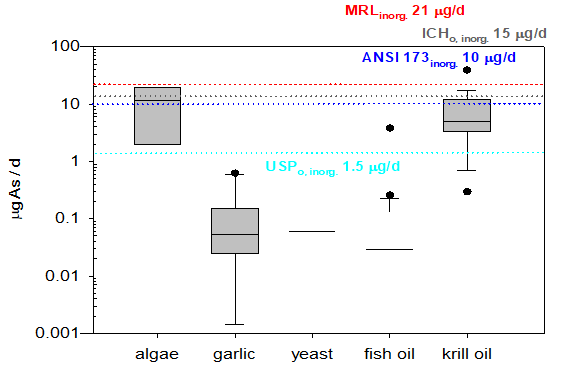
- Archaeology
-

Furthermore have we looked at imaging and elemental fingerprint for the identification of glass types mainly by LA-ICP-MS analysis. One project studied the origin of Roman glass beads found in Scotland.
Some of our publications in this field:
- First comprehensive peat depositional records for tin, lead and copper associated with the antiquity of Europe's largest cassiterite deposits
- Atmospheric pollution over the last 3300 years
- Ancient copper and lead pollution records from a raised bog complex in Central Wales, UK
- Arsenic exposure of humans by doing arsenic speciation analysis of hair and nails
- Roman glass beads
- Cobalt speciation
-
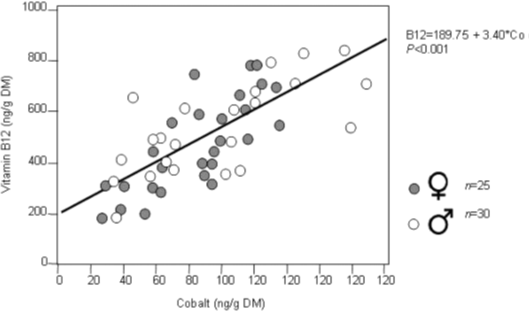
A method was developed to distinguish between vitamin B12 bound cobalt and cobalt present as other species. It was possible to show that foetal liver content of vitamin B12 is gender specific and that it represents only about 45 % of the total cobalt.
Publications
- Bio-Imaging
-

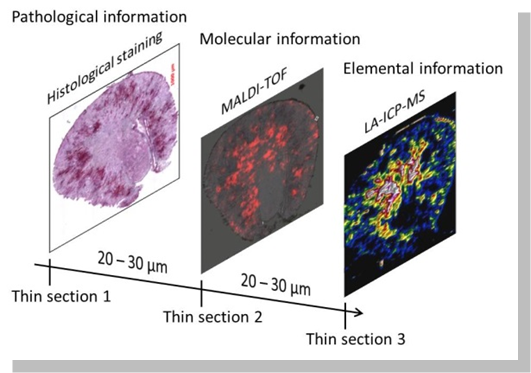
Bio-imaging involves the determination of the elemental or molecular distribution pattern. Combining information of elemental and molecular distribution from neighbouring thin-sections with histological information allows correlation between pathology, proteins and metal concentrations.

For example imaging of fungal infected tissue showed that iron and copper distribution changes due to infection and also showed that the host tries to combat the infection by changes in the copper metabolism. Whereas in case of bacterial infection the main change noticed was a significant increase of calcium in the infected area accompanied by a decrease of all essential elements.
Dynamic Bioimaging
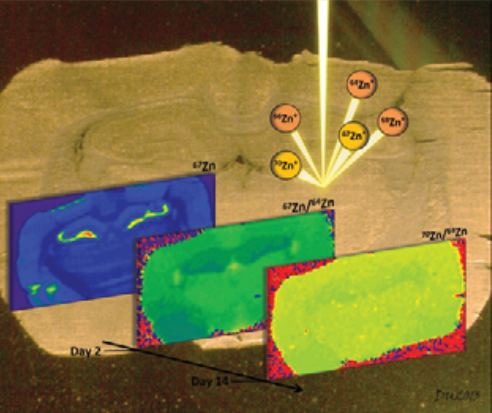
Bio-imaging of tissue sections obtained from feeding experiments with enriched stable isotopes conserve the metabolic turnover of the element(s).
Publications
- Fungal Iron Availability during Deep Seated Candidiasis Is Defined by a Complex Interplay Involving Systemic and Local Events
- Host-Imposed Copper Poisoning Impacts Fungal Micronutrient Acquisition during Systemic Candida albicans Infections.
- Metal chelation and inhibition of bacterial growth in tissue abscesses
- Microanalytical isotope ratio measurements and elemental mapping using laser ablation ICP-MS for tissue thin sections: zinc tracer studies in rats
- Isotope ratio measurements in biological tissues using LA-ICP-MS - possibilities, limitations, and perspectives
- Fungal Iron Availability during Deep Seated Candidiasis Is Defined by a Complex Interplay Involving Systemic and Local Events
- Boron speciation
-
The boron content in high-purity silicon used in semi-conductor production is an important quality parameter during production. The quantification of boron in silicon matrix is difficult due to its generally low concentration.
In a collaboration with Elkem it was possible to show that boron quantification in silicon is also species depending. A method was developed to avoid the false quantification of boron in this type of material.
Publication

- Metallo-protein speciation
-
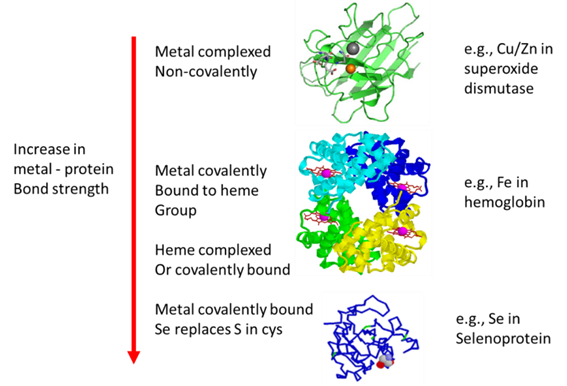
- One is whether a protein requires a specific metal for its activity and the stoichiometry associated with it
- another is the quantification of a known metalloprotein using species-specific isotope dilution for quantification. The standards for this can be produced depending on the protein chemically. One of the most suitable proteins for this is superoxide dismutase a copper/zinc depending enzyme.
- The labile metal-protein bonds make the development of novel analytical methods challenging. We have made some advances in this area to reach the holy grail of absolute quantification of proteins.
Some of our publications in this field:
- Zinc is essential for high-affinity DNA binding and recombinase activity of {varphi}C31 integrase
- Chemical Preparation of an Isotopically Enriched Superoxide Dismutase and Its Characterization as a Standard for Species-Specific Isotope Dilution Analysis
- Species specific isotope dilution versus internal standardization strategies for the determination of Cu, Zn-superoxide dismutase in red blood cells
- Absolute quantification of superoxide dismutase (SOD) using species-specific isotope dilution analysis
- Accurate and precise quantification of Cu,Zn-SOD in human red blood cells using species-specific double and triple IDMS
